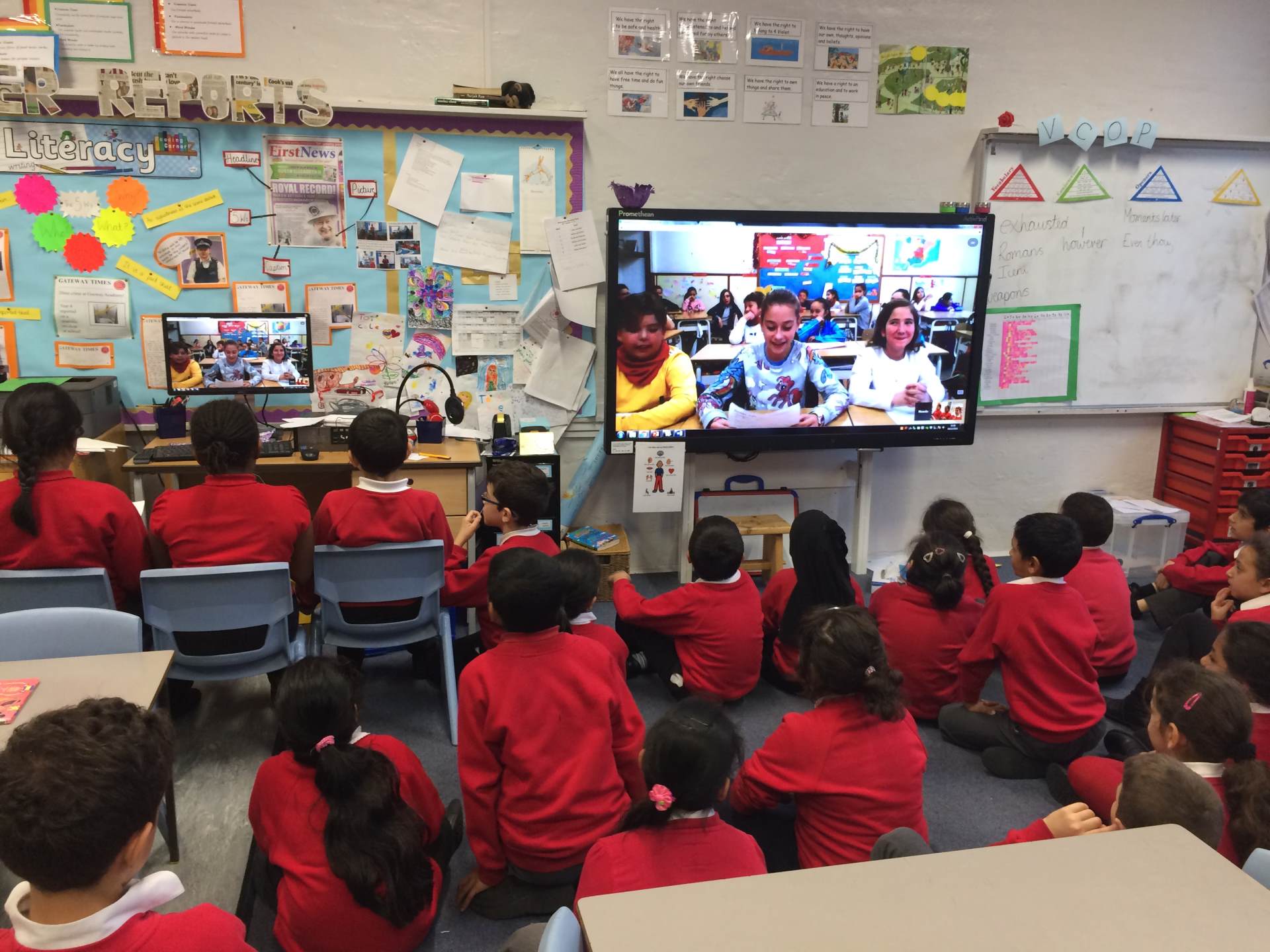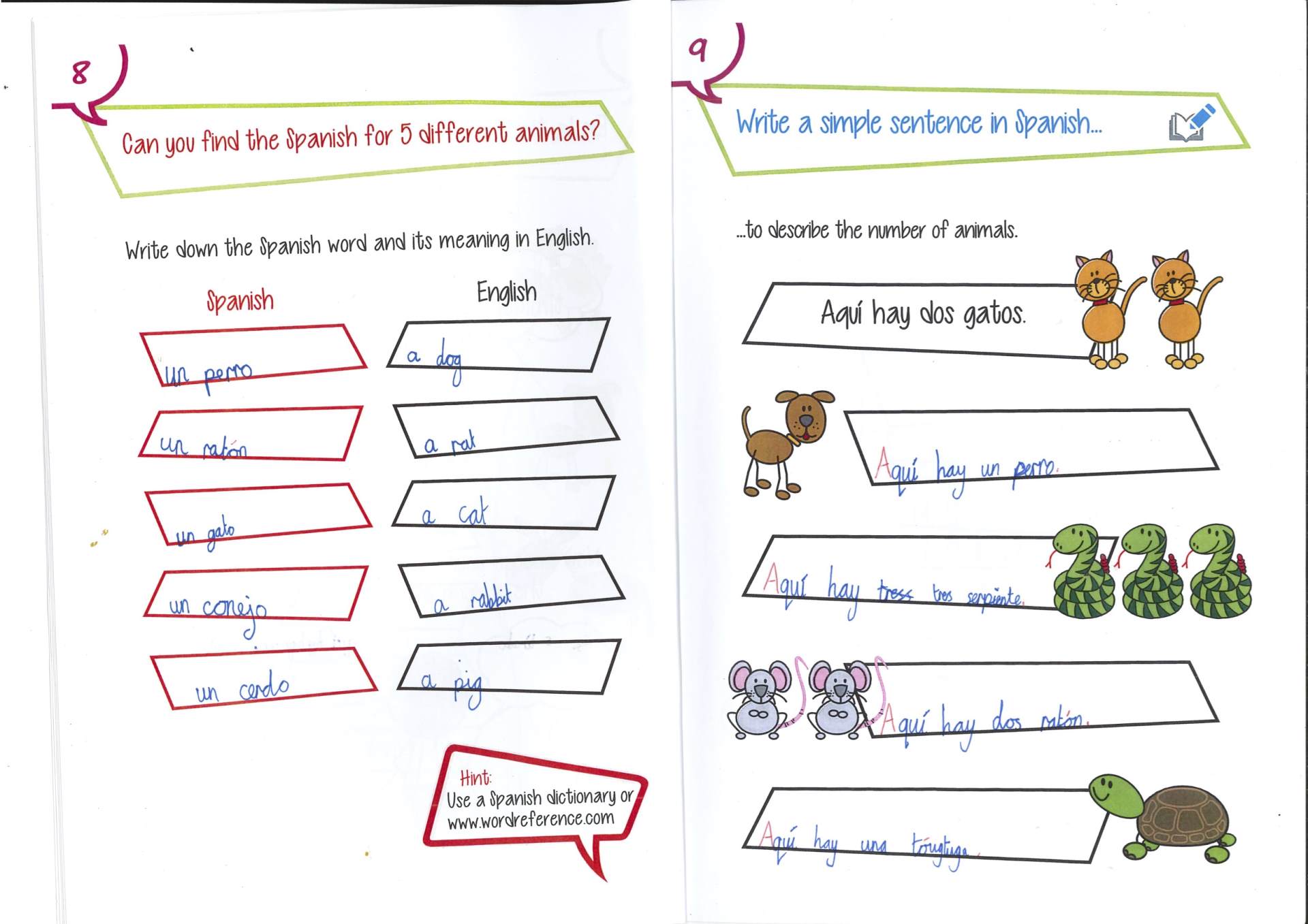Spanish
Curriculum Intent
“Learning a foreign language is a liberation from insularity and provides an opening to other cultures. A high-quality languages education should foster pupils’ curiosity and deepen their understanding of the world. The teaching should enable pupils to express their ideas and thoughts in another language and to understand and respond to its speakers, both in speech and in writing. It should also provide opportunities for them to communicate for practical purposes, learn new ways of thinking and read great literature in the original language. Language teaching should provide the foundation for learning further languages, equipping pupils to study and work in other countries.
Primary National Curriculum for Languages 2014
With these aspirations, our INTENT for the Languages curriculum is for all children at Gateway Academy to be able to communicate ideas, facts and feelings in speech and writing in Spanish.
We want children to:
- Understand and respond to spoken and written language from a variety of authentic sources
- Speak with increasing confidence, fluency and spontaneity, finding ways of communicating what they want to say, including through discussion and asking questions, and continually improving the accuracy of their pronunciation and intonation
- Write at varying length, for different purposes and audiences, using the variety of grammatical structures that they have learnt
- Discover and develop an appreciation of a range of writing in Spanish.
The Curriculum
Key Stage 2 (Years 3 to 6)
All children in Key Stage 2 learn how to:
- communicate orally
- share their ideas and feelings using speech
- compare their use of English grammar and spelling to another language
- express some ideas in writing
The National Curriculum outlines what children should be taught under more general headings. Some of these include:
- Listening to a language and joining in to learn everyday words and phrases
- Learning how to have conversations in another language to share ideas and opinions as well as being able to ask and answer questions
- Reading texts and stories in another language, carrying out basic comprehension tasks
- Learning songs, poems, rhymes and stories in another language to help with vocabulary but also with cultural understanding
- Writing some words and phrases from memory as well as describing people and places with basic sentences a range of everyday and routine topics such as numbers, colours, greetings, family, animals, school, travel, or other similar subjects that seem appropriate.
- In Year 3 children might just use speech and limited written tasks to learn the basics. As they move up from Year 3, children will see much more of the written language and build on their early skills, allowing them to speak, write and listen with much more skill.
The curriculum overview for the school is as follows:
|
|
Term 1 |
Term 2 |
Term 3 |
Term 4 |
Term 5 |
Term 6 |
|
Year 3 |
Greetings and Spanish culture Classroom instructions Animals vocabulary Numbers and plurals Soft ‘ci’ , ‘R’ phoneme |
Conjunctions and simple sentences Gender Memorisation and storytelling Saying my name Christmas Soy (I have) I phoneme |
Spanish names Colours Opinions Word order of adjectival order A traditional story: the Enormous turnip Christmas song A, E, J, R phomemes
|
Numbers 1-10 Spanish maths: addition and subtraction Tengo (I have) Age Easter bunny/eggs
|
Definite (el,la,los,las) and indefinite (un, una, unos, unas) articles Quisiera (I would like) Extending sentences with pero Hard C phoneme
|
Es Extending sentences with también Numbers 1-15 Days of the week R, U, I, hard g phonemes Assessments Barcelona project |
|
Year 4 |
Revision of animals and classroom instructions A Spanish poem How to use a Spanish bilingual dictionary Parts of the body Negative ‘no’ soft c, z phonemes
|
Colours Adjectival agreements Food Opinions about food Goldilocks story Christmas: the snowman son (they are) a phoneme
|
Quisiera with food Revise numbers 1-15 Months Numbers 16-31 Spanish maths:division and multiplication Word order Me gustan with plural nouns Quiero Christmas traditions Hard c, ll, qu, ch, phonemes
|
Dates and birthdays Revise numbers 1-31 Third person Personal descriptions (hair and eye colour) J, soft c phonemes Easter: Las Fallas festival |
Family vocabulary Possessive adjectives (mi, mis) Further dictionary skills Clothing vocabulary Revise adjectival agreements i phoneme |
Memorise a short text (Talk4writing) Revise food, opinions, months, numbers and personal descriptions Assessments Spanish festival project ll phoneme |
|
Year 5 |
Revise opinions Sports vocabulary Sports clothing Verb tener Negative Masculine and feminine nouns Dictionary skills Preposition para (for) i phoneme |
Weather vocabulary Hobbies vocabulary Pets Traditional tale: The fox and the crow Christmas in Spain j, qu phonemes |
Verb ser Dictionary skills Revise dates, months Legends Numbers 32-60 School subjects The three wise men u phoneme
|
Primary school in Spain Subject preferences Telling the time Reasons Verb ir Transport vocabulary Easter: Los tres magos (three kings) Silent h phoneme Easter cards |
Items in a classroom Possessive adjectives (revision and new) Prepositions hard c phoneme |
Revise ir, key phonemes The simple future tense Alphabet Revision Assessments Project: Day of the dead
|
|
Year 6 |
Revise tener and ser Questions Telling the time Daily routine |
Daily routine in other countries Houses Rooms in a house Christmas: toys from around the world |
Tener phrases Puedo + infinitive Bedroom descriptions Places in a town |
Revise places in town Revise ir Directions Revise food Buying food April fool’s day Christmas presents/toys around the world |
Numbers 61-100 Ordering food in a café Famous Spanish food and menus The preterite (past) tense |
The preterite (past) tense Revision Assessments The Spanish alphabet |
Recent Projects
Language exchange
Each year pupils in Year 4 take part in a series of language exchange video conferences with children at Colegio Santa Maria in Valencia, Spain. To prepare for the conferences children learn the vocabulary required to maintain a conversation with a native speaker in which they introduce themselves to one another and discuss their various likes and dislikes.

Pupil outcomes
In accordance with National Curriculum guidance, children complete a series of structured activities in their Spanish cuadernos (workbooks). Pupils carry out word and sentence level tasks that develop their reading, writing and listening skills.
How Parents Can Help
Support your child’s learning at home by trying some of the following:
1. Take an interest, and learn with your child
Learn alongside them: find out the language they are learning and get them to teach you some key words and phrases. They might like to make a simple poster illustrating key words and phrases or use sticky notes to label everyday objects in a foreign language. Another good idea is to create a ‘new words’ dictionary for them to record all the new things that they have been learning.
2. Make it multimedia
Why not find books, films or songs in Spanish? These can be a wonderful way to learn a language without even realising it. Early-readers or lift-the-flap books are brilliant for learning a new language. The Internet is perfect for bringing some cultural learning into your home, allowing as it does access to videos, radio/audio and images from all around the globe.
3. Make it fun
Above all, make any additional language learning you do at home fun, practical and supportive. Learning a new language can be a little daunting at first but with the help of parents and schools, it needn’t be the case. Even playing simple games (such as 'Snap', 'Guess Who', 'Snakes and Ladders') and adding an element of Spanish (such as counting, colours or even just answering yes and no) could be a wonderful aid.
Further Support And Useful Weblinks
A good way to help your child is to use some of the online resources that are available. ‘Free’ places to look include:
- The Government’s languages curriculum booklet
- Languages pages from the BBC
- Little Red Languages (free languages resources and activities)
- Duolingo — a fun and effective way to learn languages
 Gateway Academy
Gateway Academy